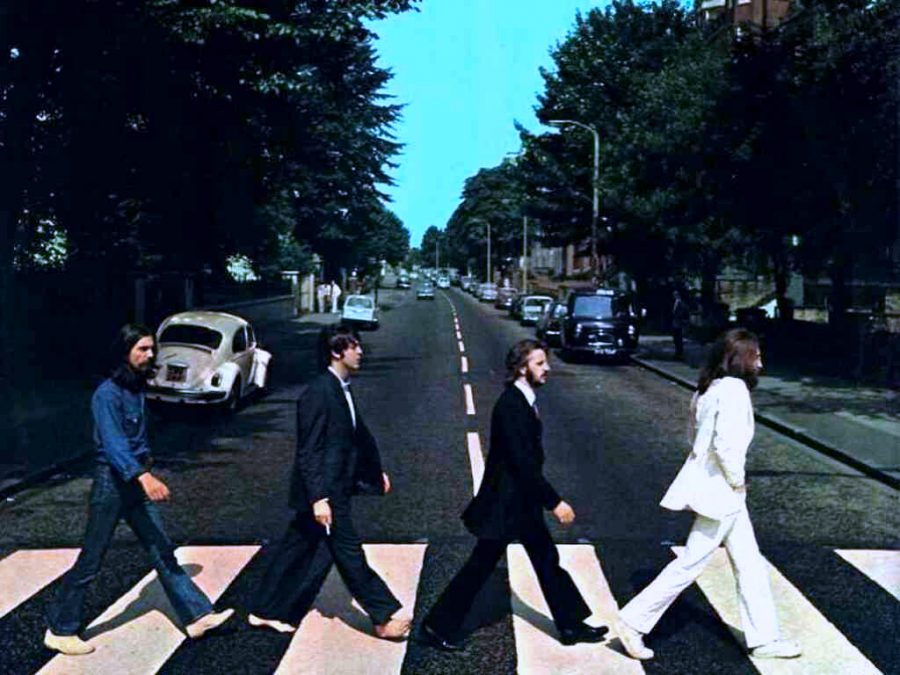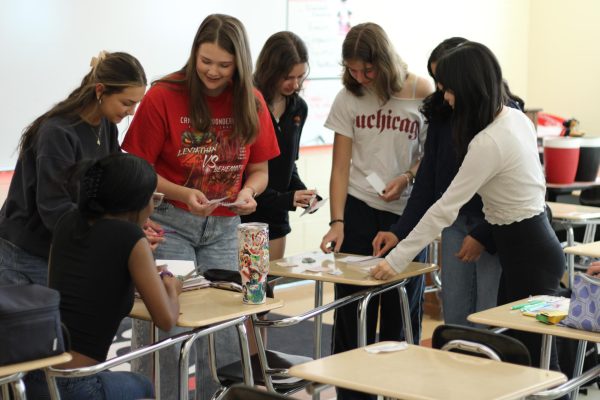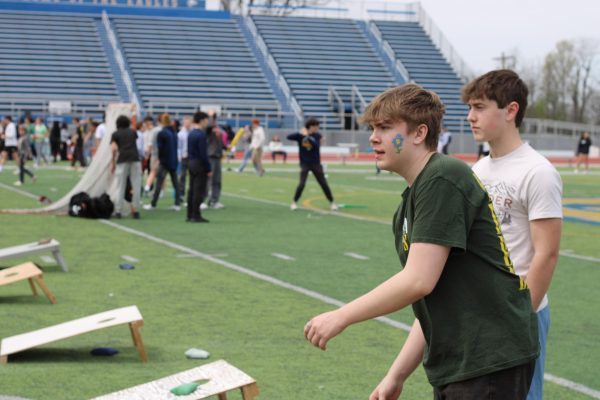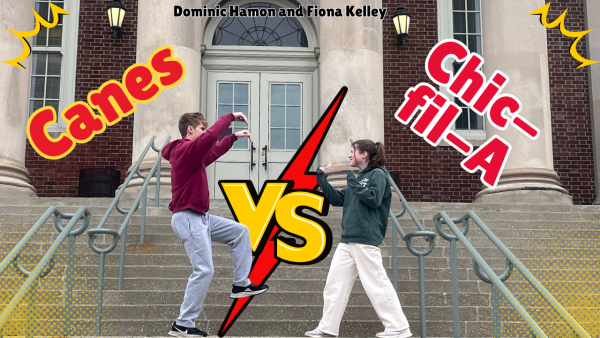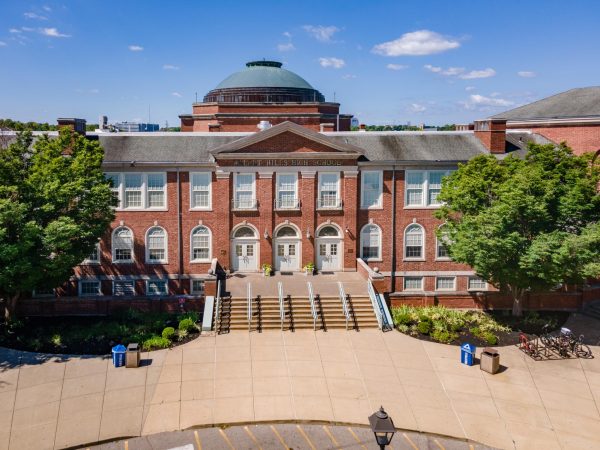Abbey Road Re-Release Album Review
The Beatles were tired of it all. The pressures of being the biggest band of all time began to wear them down. This wasn’t the first time; they quit touring in 1966 after complaining about how much time and effort it took to perform only for their music to be drowned out by screaming fans.
There was just one problem: these fans were still there, hungry for new songs, performances or any sign that the Beatles were still there. The band obliged, putting out Sgt. Pepper’s Lonely Hearts Club Band and Magical Mystery Tour in 1967 and The Beatles (aka “The White Album”) in 1968, but the signs of the end of an era began to show.
The band members started to argue with each other, walking out of recordings of the other members during the “White Album” sessions and going behind the backs of the others to make songs (John Lennon’s “Revolution 9” was unbeknownst to Paul McCartney until the album’s release).
The band recorded Let it Be in 1969 with a film crew in the studio with them to document the making of the album, with very disappointing results. Instead of the film showing the genius of the Beatles recording an album, it showed the dull, painstaking process of making a track while watching the band’s friendship deteriorating. The Beatles themselves were so disappointed that they didn’t release the album for over a year, separating temporarily and growing out their beards before returning to record one final album.
That was 50 years ago. The album was Abbey Road. The last album the Beatles recorded is now half a century old. And its is on track to reach number one on the Billboard charts again. Paul McCartney and Ringo Starr reunited again this year for the 50th anniversary re-release of the album to remix the tracks and add never-before-heard demos and early takes like they did for the “White Album” and Sgt. Pepper.
The album opens with an oddly ironic exclamation. Over McCartney’s bass line and Starr’s cymbal tapping, Lennon softly repeats the line “Shoot me,” which…happened. The song “Come Together” was originally written as a campaign song for Timothy Leary against governor of California Ronald Reagan. Leary ended up hating the song, with Lennon commenting later, “I didn’t rip him off, it’s just that it turned into ‘Come Together.’”
The song was originally much more upbeat than its final product (as Lennon had based it off of a Chuck Berry song) but McCartney said that the band’s decision was “to slow it down and completely change the arrangement to make it funky and get away from Chuck’s record.” They certainly accomplished their goal. With the final song sounding like an edgy jazz song in tempo and simplicity, and the added quality of the studios of today, “Come Together” is a dark and melodic start to a very drastically lighthearted and dark album.
The next track is one of the more uplifting one, and one of the most famous of all Beatles tracks. Written by George Harrison, the song “Something” is widely considered to be his magnum opus, a slow love ballad written for Patty Boyd, Harrison’s girlfriend at the time.
“I had a break while Paul was doing some overdubbing so I went into an empty studio and began to write,” Harrison said. “There was a James Taylor song called ‘Something In The Way She Moves’ which is the first line, and so I thought of trying to change the words. But they came when I first wrote it, so in the end I just left it as it is.”
The end result is a beautiful and ambiguous love letter that could apply to anyone. The line “You’re asking me ‘will my love grow?’ I don’t know” correctly portrays the way love works, always changing, growing and shrinking without the person able to control them. The way Harrison can’t put his finger on what makes his lover so special to him allows for space for relatability, where anyone who loves anybody can use this song to describe it.
Harrison’s beautiful ballad is followed by a morbid novelty song by McCartney. “Maxwell’s Silver Hammer,” a song about a teenage serial killer who uses a hammer to bash in the heads of his date, his teacher, and the judge at his murder trial. “It epitomises the downfalls of life,” McCartney said. “Just when everything is going smoothly- bang bang!”
This song is nowhere near as influential or as famous as its predecessors (in fact McCartney has made it clear that he knows that many fans hate it) but the instrumental progression fits in with the rest of the album well enough to not be considered a throwaway track.
McCartney returns for the next song, a powerfully sung apology to a long-gone lover. The breakup waltz “Oh! Darling” was inspired by Little Richard, and it holds the record for the most time McCartney has spent on vocals. “It’s a bit of a belter, and if it comes off a little bit lukewarm, then you’ve missed the whole point.”
“Bit of a belter” is subjective here, as McCartney lets it all out on this song. The remaster adds a slight echo to the vocals, which in turn adds to the emotion that McCartney brings to the already emotional lyrics. While “Something” shows the joys of loving, “Oh! Darling” brings up the tragedy of being left, with the vocals screamed by McCartney serving as what sort of thoughts and intensity could be going through a person’s head at the moment.
The Beatles have no problem writing relatable songs, as shown by the previous track, but the next song on the album is not one of those songs. “Octopus’s Garden,” the second and last song written by Ringo Starr to be featured on a Beatles album, is about exactly what it sounds like: hanging out in an octopus’s garden.
Starr said that he got the inspiration for the song from a conversation he had with a sea captain about octopuses. “He told me they go around the sea bed finding little stones, tins and bottles to put in front of their cave like a garden,” Starr said. “I thought that was fabulous.”
The song (strangely the second sea-related track by the Beatles sung by Starr) is much more lighthearted than “Oh! Darling,” and, while not very complicated musically or lyrically, has proven to be a well liked song by many Beatles fans.
What follows next, however, is one of the strangest songs the band ever recorded. “I Want You (She’s So Heavy),” written by Lennon for his wife Yoko Ono, has a very rough, bluesy feel to it. The lyrics are not the focus (there are only 14 words in the entire song), nor really is the music, which is very simple and repetitive. Strange for a song that runs for eight minutes.
There isn’t much to say about this song, as this song doesn’t say much itself. The second half is just one riff played over and over while a buzz slowly grows in the listener’s ear until everything just stops. Come to think of it, that’s a pretty good analogy for the end of the Beatles saga.
With that, side one is finished and the LP is flipped over to play one of the band’s most iconic songs and their most played song on Spotify. “Here Comes the Sun” is the album’s most uplifting track and is considered to be one of Harrison’s best compositions. The story goes that Harrison just didn’t show up to the recording studio one day and instead went to his friend Eric Clapton’s house and just started messing around on the guitar.
“It was just the release of that tension that had been building up on me,” Harrison said. “It was the first time I’d played guitar for a few weeks. It just came and I finished it later.” This just goes to show the true genius of every member of the band, with brilliant songs like this just floating through their heads. This song in particular still seems to resonate, and the remaining Beatles chose this track to include a promo music video for the re-release showcasing the heightened ambiance and orchestral accompaniment.
Said Lennon, “I’ve just written a song called ‘Because.’” He definitely did. After hearing his wife play “Moonlight Sonata,” he told her to play it backwards and give him the chords. This progression would become the backing for “Because,” an ethereal look at the world’s most mundane qualities. “Because the sky is blue, it makes me cry” being one of the lyrics, it takes a solemn look at things that bring joy to most people, with Lennon, McCartney and Harrison all sharing lead vocals for a dreamlike quality that is furthered with the new remaster.
The next few songs make up one of the most beautiful and rightful endings to any album, let alone a band’s legacy. The medley at the end of Abbey Road takes segments of songs the band members never finished and puts them into one tapestry of creativity that perfectly encapsulates each individual and the band as a whole.
The medley is prefaced by the theme driving “You Never Give Me Your Money,” of which the following songs gather a familiar motif from, that of discontent and reconciliation. McCartney’s protagonist in this song reminisces over a relationship that feels broken, and how he can escape into a future free of this kind of thing, finding this future in the end as he sings “One sweet dream came true today.” The song fades with a clanging of assorted objects, feeling much more mechanical in the remaster than the melodic tone of the original, until all that is left is a cricket chirping.
A cricket, and then the bass. The medley starts in full with “Sun King,” a largely instrumental track helmed by Lennon, giving homage to Harrison with lyrics “Here come the sun king.” This song serves as a kind of calm before the storm, with the lyrics being mostly gibberish and the song itself being very quiet in nature, before diving right into the next segment, “Mean Mr. Mustard.”
This song, standing only at around a minute, is one of Lennon’s more fantastical tracks about a man who “sleeps in a hole in the road” The song doesn’t have much to it, but it rolls into Lennon’s “Polythene Pam,” a story about a tomboy. Lennon references Pam in a “polythene bag,” which could have been an allusion to the “bag-in” protests that Lennon and Ono did to satirize prejudice.
After a guitar solo by Harrison, the cymbals crash and McCartney takes over again. “She Came in Through the Bathroom Window” is another song about wanting something better in life, leaving his job and lamenting over his love. The pounding drums and ringing guitar fade away into a quiet piano riff that starts McCartney’s surprisingly epic lullaby.
“Golden Slumbers” is the song on the album that seems to have been given the highest quality reboot. The orchestral backing and the bass plucking has been upped to take up space in the speakers, with the way that McCartney’s vocals seem subdued adding to the spectacle of the music around him. He tells the listener “Once, there was a way to get back home. Sleep pretty darling, do not cry. And I will sing a lullaby.” The fact that this comes after songs like “She Came in Through the Bathroom Window” makes it seem like McCartney wants to show that, yes, there are bad things and there will always be a longing to get somewhere else, but don’t let it worry you. Take your time and rest, just as the Beatles would do.
Another uplifting segment follows, with “Carry that Weight” building off of “You Never Give Me Your Money,” but presenting itself with more of a happy tone. Using the “I never give you my…” template, the song shifts into a trumpet heavy chant that seems to be made to bring the listener up. “You’re gonna carry that weight a long time” leaves the listener with the attitude like “yeah, I’ve got issues, but it’s fine.”
And then it’s the end. Rightly dubbed “The End,” this song is a celebration of each member of the band more than anything. It gives Starr his only drum solo in the entire Beatles canon, and a twenty second guitar solo split between Harrison, McCartney and ending in Lennon wailing on the strings before everything cute out and a piano plays. McCartney finishes it off with the line “And in the end, the love you take is equal to the love you make.” And then the Beatles were over…
…Not really. After 30 seconds, the guitar is strummed again for another 30, with McCartney singing the throwaway “Your Majesty.” Originally intended to be a segment in the medley, this song perfectly encapsulates the Beatles’ story: coming in with a bang and ending too soon.
And that’s Abbey Road. But the remastered anniversary release doesn’t end there. The band also included 23 previously unreleased demos and early takes that hardcore fans might not enjoy, but are good to hear if the history and behind the scenes of the album interests people. Overall rating: 10/10. It’s a must listen for Beatles fans and music lovers in general. It’s as much a part of history as it is a part of culture and should be celebrated as such.
What’s the point of reviewing and talking about an album that came out 50 years ago? Because unlike many albums that came out 50 years ago, this one is still relevant and popular today. If an album that was released in 1969 can still hit number three on the Billboard charts today, it’s worth talking about just as much as any music that comes out nowadays. So many artists today have been influenced by the Beatles and how they were able to take their songwriting to whole new levels, ones that they might not even have intended, but that listeners can ingest and think about for themselves, and all of their songs and albums, including this one, have withstood the tests of time and done this for people.
Because that is music.
Because that is the Beatles.
Because.
Your donation will support the student journalists of Walnut Hills High School. Your contribution will allow us to purchase equipment, cover our annual website hosting, printing costs and offset competition and conferences fees for students.




